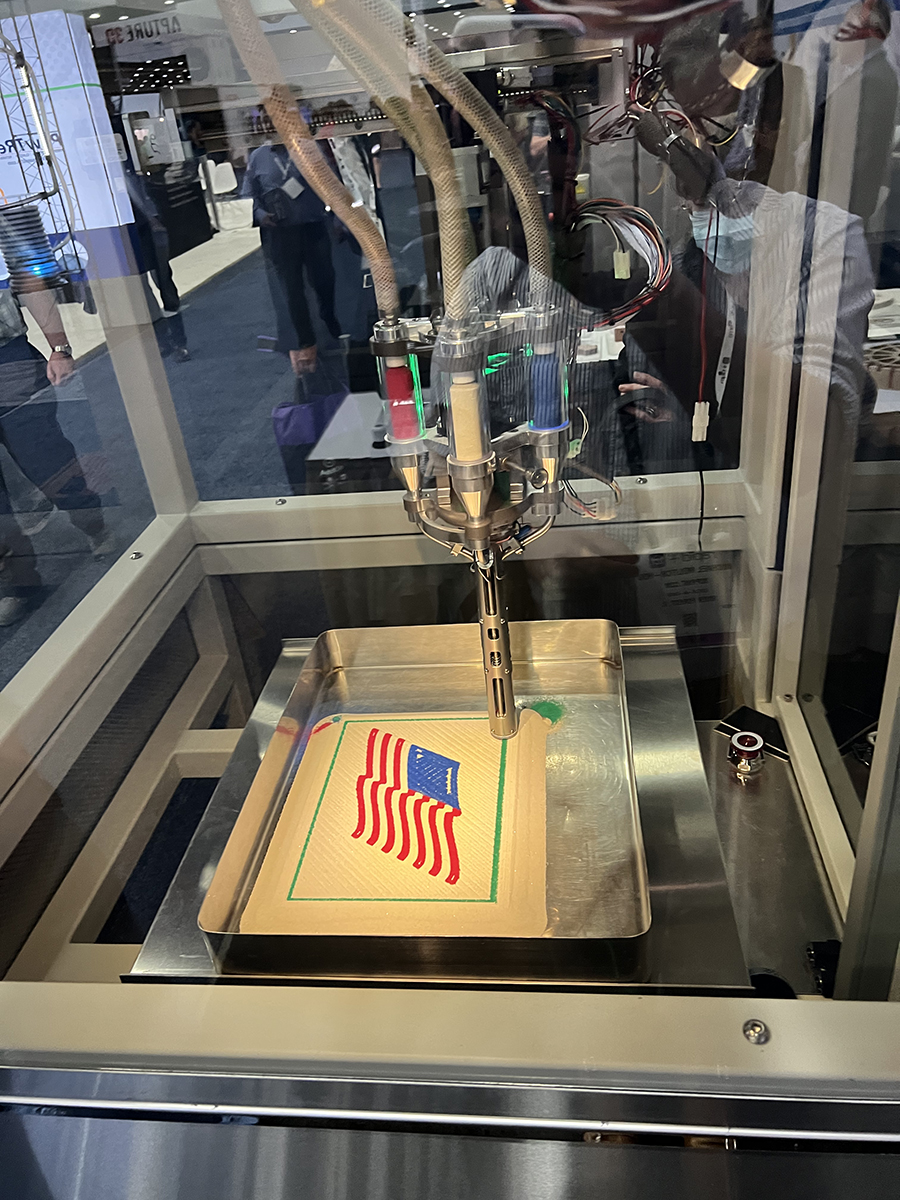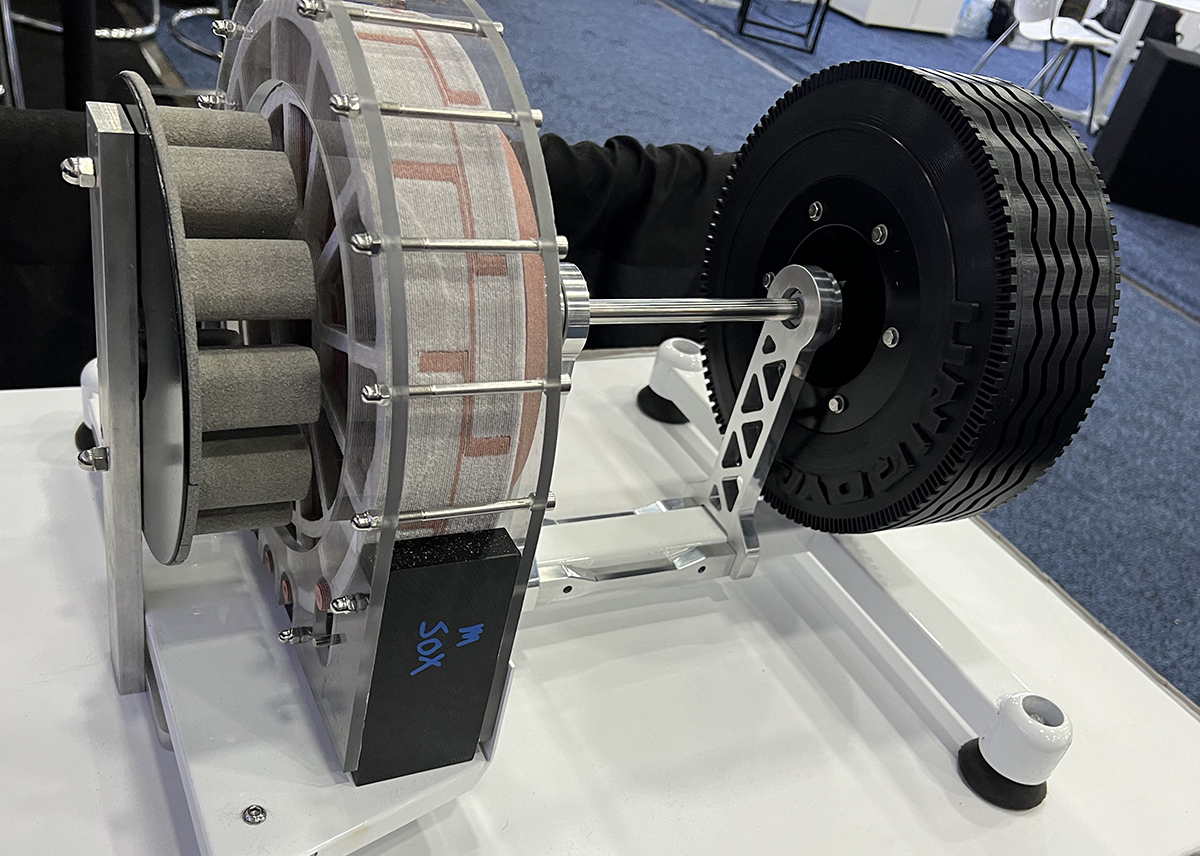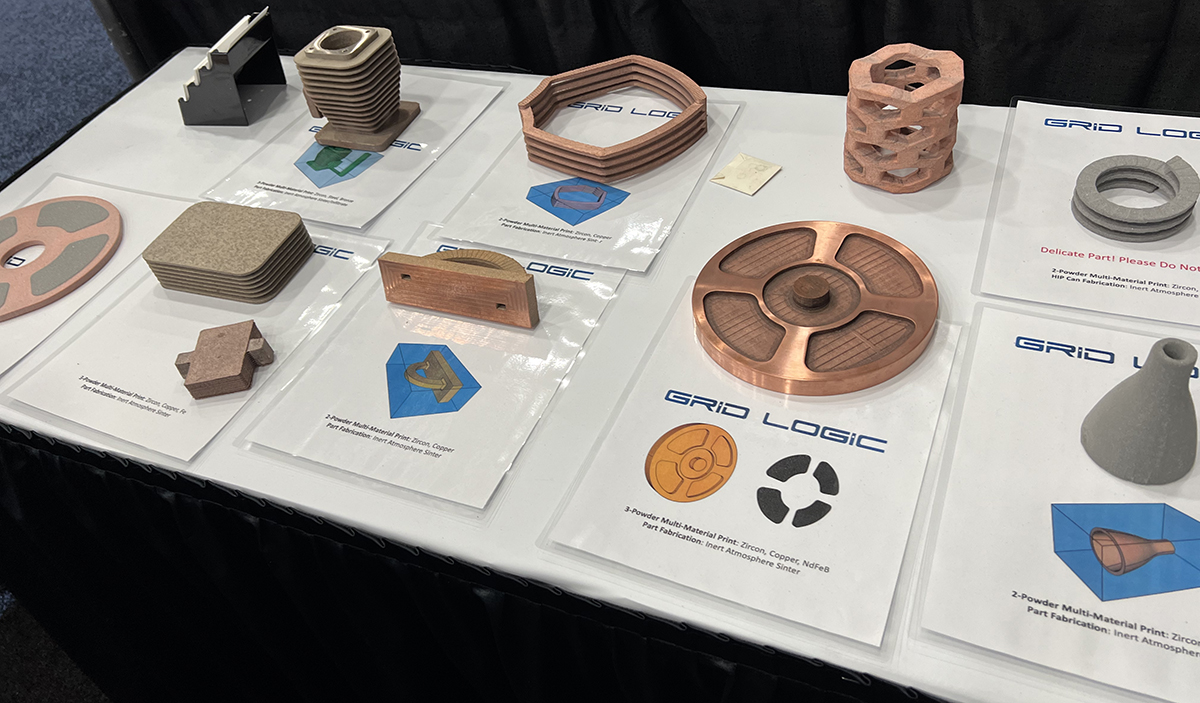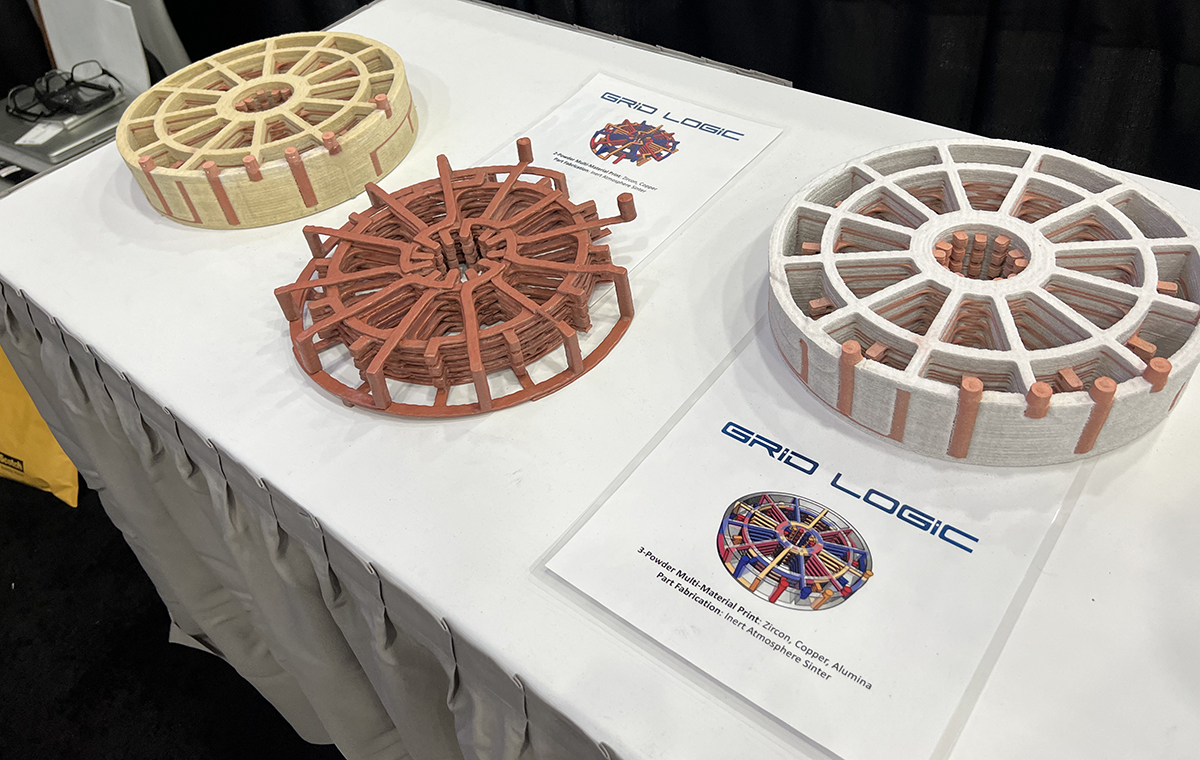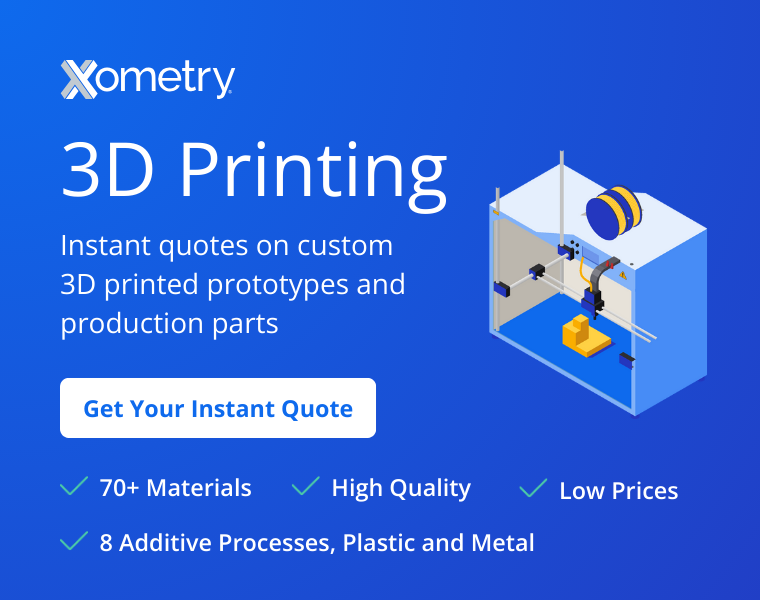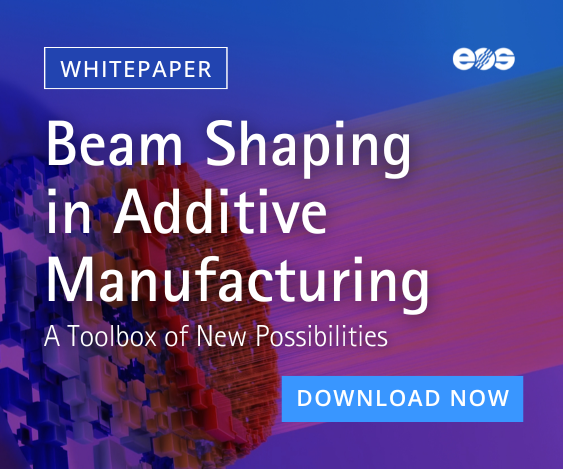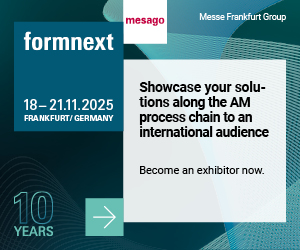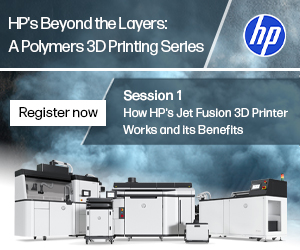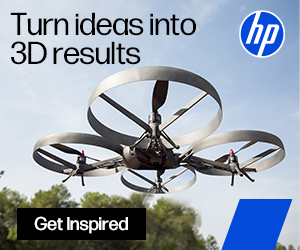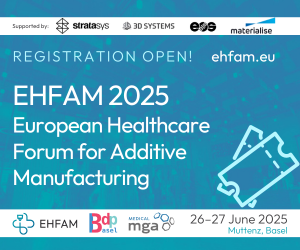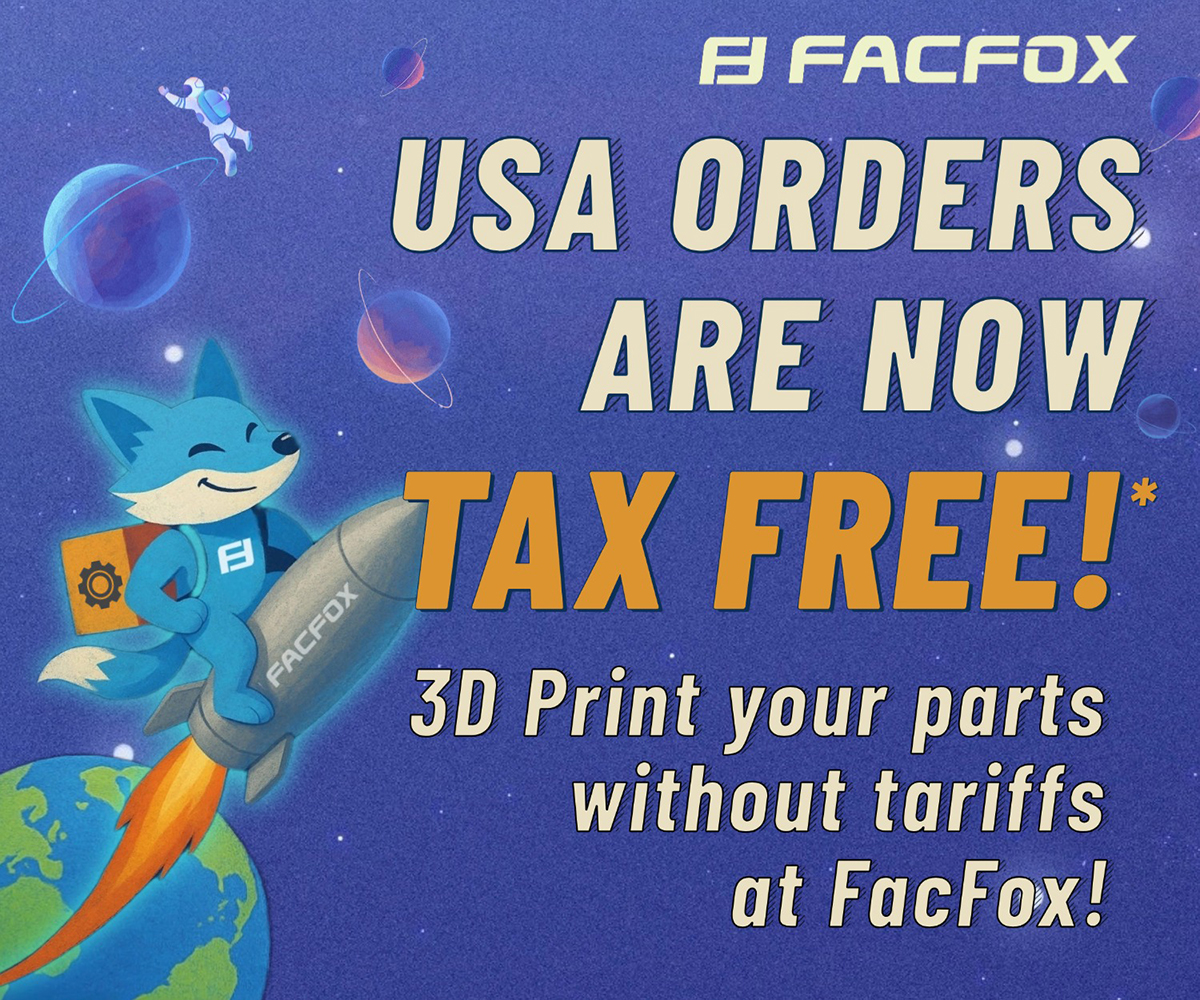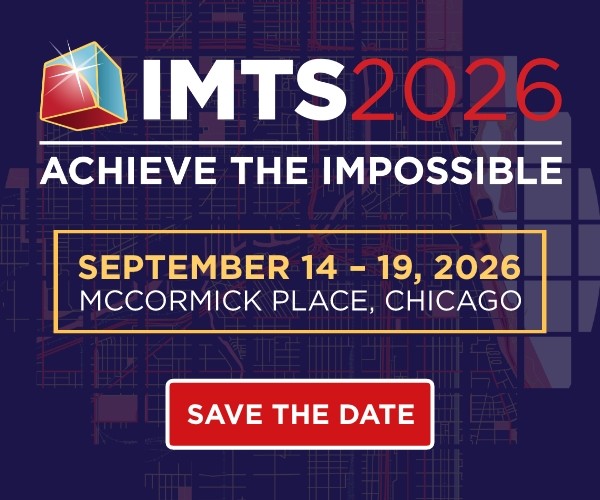Multi-Metal 3D Printing Made Possible with Grid Logic’s Powder Deposition Tech
One of the most interesting companies tucked away at RAPID + TCT 2022 was a small Michigan startup called Grid Logic. Though the name derives from its prior activity in improving the country’s electrical grid, the concept of grid logic could be easily applied to X-Y-Z axes of 3D printing. It’s this grid that the startup is disrupting in a deceptively simple and ingenious way. To tackle the issue of multi-metal 3D printing (or multi-material when ceramics are added to the mix), the company has come up with a method for depositing metal powders.
Printing a colorful U.S. flag at RAPID, the system feeds three or more powders onto a substrate layer by layer. While the sand being deposited at the event was just for show, the machine is capable of combining dissimilar metals and ceramics that would be difficult to blend with other techniques, including additive manufacturing (AM). Once complete, the print is simply sintered in a furnace to create a final part.
In this way, the technology is most like metal binder jetting: 3D printed metal powder that is sintered. Unlike binder jet, there is no binder. The metal particles just rest atop one another, with zircon as a support material, and are sintered together. There are no complex inkjet heads, no rollers or recoaters. And there are certainly no lasers. The metallurgy is the work of CEO Matthew Holcomb, a chemical engineer, whose brother, Jim Holcomb, a former engineer with General Motors, designed the robust gantry system.
On display at the booth were a variety of application demonstrators, including an axial flux permanent magnet rotor, made up of a neodymium magnet and copper conductor, to power electric vehicles. There was also a three-phase stator coil that could be used as an induction motor for a variety of industrial applications. Other parts showcased the ability to combine a copper coil within a ceramic insulator.
While it is possible to blend dissimilar metals with directed energy deposition (DED), that technology is unable to produce the same complexity as possible with powder bed fusion (PBF). 3D printing with multiple materials is more than a little difficult to achieve with PBF, however. And, with traditional metal binder jet, there’s the need for a binder and combining different metals is also complicated.
The company seems to have previously worked with Oak Ridge National Laboratory (ORNL) and the Department of Defense (DoD), to create beryllium-replacement components for Raytheon missile systems. Now, the company is looking for next steps, including partners and customers. Grid Logic offers 3D printing services, materials development, R&D, and the development of custom systems.
With that in mind, there are plenty of opportunities for the firm. For instance, the recently announced AM Forward program could see Grid Logic mentor with GE, who is near full commercialization of its metal binder jet technology. The same program would give the startup access to ORNL’s Manufacturing Demonstration Facility. There are also a number of grants that the company could apply for. And because it is based in Michigan, it may be able to take advantage of Project DIAMonD.
I can’t imagine this business staying independent for too long. Bound metal printing is projected to produce $54 billion in parts by 2030 according to the recent “Market for Bound Metal Additive Manufacturing 2022” report from SmarTech Analysis. Given the excitement around this segment, it wouldn’t be surprising if Grid Logic got scooped up by GE, Desktop Metal, or HP.
Subscribe to Our Email Newsletter
Stay up-to-date on all the latest news from the 3D printing industry and receive information and offers from third party vendors.
Print Services
Upload your 3D Models and get them printed quickly and efficiently.
You May Also Like
Disruption, as Usual: Rich Garrity on How Stratasys Plans to Capitalize on 3D Printing’s Latest Big Opportunity
Few companies in the history of additive manufacturing (AM) have had as much impact as Stratasys on the overall course of the industry’s development. Stratasys has existed for about as...
3D Printing Financials: Stratasys Kicks Off 2025 with Fresh Cash and a Tight Grip on Strategy
Stratasys (Nasdaq: SSYS) started the year with strong momentum, adding fresh cash to its balance sheet and achieving profitability on an adjusted basis. The company also gained a new investor,...
Stifel’s AM Forward Fund Launches, Looking for US Manufacturers to Invest In
The need for greater resiliency in the defense supply chain is real and urgent. One area the US government has been focusing on is building a faster and more sustainable...
Driving Sustainable Additive Manufacturing: Continuum Powders Joins AMGTA as Principal Member
Texas and California-based Continuum Powders, a leading supplier of high-performance, sustainable metal powders for additive manufacturing (AM), is further strengthening its commitment to sustainability and circular manufacturing by joining the...



